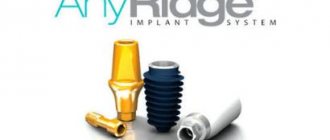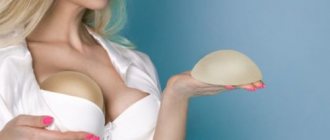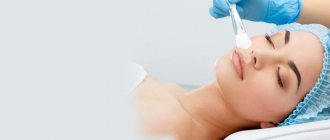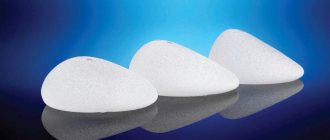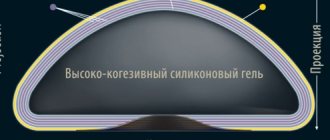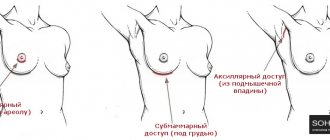- Types of implants
- How to choose the right implant Artificial tooth root material
- Surface of dental implants
- Implant shape and manufacturer’s range
- Active thread
- Adapter from implant to abutment
The variety of dental implants is simply enormous. Today there are more than 400 implant manufacturers in the world, of which Moscow dentists work with 30-40 companies, selecting the best offers for consumers.
Types of implants
The implants differ from each other:
- shape;
- material;
- external surface treatment;
- thread type;
- connection to the abutment;
- manufacturer's warranty.
Evaluation of these parameters and the benefit of each characteristic directly for the patient allows us to formulate ratings of dental implants and divide them into groups.
Traditional ranking of implantation systems:
- The premium segment is products with the highest survival rates and high cost, aimed at solving the patient’s clinical problems. Products of Swiss and USA companies.
- Business class - good quality indicators, moderate affordable price. Producing countries: Germany, Sweden, USA, Israel.
- Economy level - inexpensive implants for simple dental prosthetics in the absence of pathologies. The group includes products without any design features, manufactured in South Korea, Russia, Belarus, and Israel.
Since in each country there are companies producing dental implants of different quality levels, when choosing a product they take into account not geographical location, but a set of characteristics.
Implants with polyurethane coating
Although polyurethane breast implants have been available since 1989, they are considered a new, little-tested technology.
This is practically the same silicone implant, but in a polyurethane shell.
Initially, such implants were used for repeated operations. And as a way to solve problems with contracture and rotation. But over time, surgeons began to note many other positive aspects.
- Fast and good fixation.
- Less risk of complications.
- Less chance of animation deformation.
- Ripping (waves on the surface of the implant) is less pronounced.
Polyurethane implants also have disadvantages.
- Difficult to install (requires a special sleeve).
- Requires a large incision.
- Price.
How to choose the right implant
Ratings of dental implants are formed based on a set of parameters. Each feature - shape, material, method of abutment attachment - affects the rate of survival, stability of the implant in the bone, and clinical indications for prosthetics.
So that the patient understands on what basis the dentist-implantologist offers this or that option, doctors at the ART clinic in Odintsovo willingly share information about the rules for selecting high-quality dental implants.
Artificial tooth root material
The most valuable characteristic of a dental implant is its survival rate. This indicator is of paramount importance in the formation of ratings and is responsible for patient confidence in the quality of treatment.
Survival rate depends primarily on the biocompatibility of the material. And here you have a choice:
- Pure titanium - grade 4 marking, metal content 98-99%, minimum amount of safe impurities. Titanium is completely accepted by the human body. The risk of rejection is minimized.
- Titanium alloy - marked Grade 5, contains up to 4% vanadium and 6% aluminum. Impurities reduce the cost, but cause difficulties during engraftment and shorten the service life of the product.
- Roxolid is an alloy of titanium and zirconium used by Straumann for a special line of implants. Both materials are biocompatible, which virtually eliminates the risk of rejection of the implanted root of the prosthetic tooth. The alloy is characterized by increased strength, which makes it possible to create implants of small thickness and small dimensions without loss of quality.
- Ceramics is a material used by some companies (Straumann) in the production of implants for implantation in areas with high aesthetic requirements.
Surface of dental implants
The surface structure of a dental implant determines the rate of formation of new bone cells. After implantation, osteoblasts are activated, whose function is to synthesize bone tissue. If the surface of the implant has properties that accelerate this process, the artificial root is well stabilized in the jaw bone and quickly grows with new bone cells. This is a guarantee of survival, which is why the best implant manufacturers are constantly improving the surface of implants.
Today you can find titanium rods with a rough surface:
- RBM - rough sandblasting only;
- SLA - sandblasting followed by acid etching;
- SLActive (or know-how of a specific brand) - after numerous treatments, the surface of the implants is additionally chemically modified to stimulate the growth of bone tissue cells.
The smooth surface is found only on the neck of the implant, at the border with the gum. Such dental products are produced in limited series and are installed for clinical indications. For example, against the background of periodontitis or periodontal disease.
Implant shape and manufacturer’s range
Companies produce lines of implants, combining products according to materials, structures, and certain features. The greater the range and number of options for an implantologist, the higher the brand of implants in dentists’ ratings.
There are root-shaped, lamellar, endodontic, basal, and orthodontic implants. Some models are attached without the participation of bone tissue, others, on the contrary, are immersed in the densest layers of bone structures. For classic prosthetics or when treating malocclusion with braces, mini-implants are used.
Manufacturers have their own option for almost every dental case. The implantologist knows the nuances and will tell patients according to individual clinical situations.
Most often, anatomically shaped rods are chosen for dental implantation - cone-shaped, duplicating the usual tooth root. Physiological design promotes implant healing and stability.
Implants are also distinguished:
- one-piece - the abutment, which is responsible for fastening the denture, is connected to a part that is immersed in the bone tissue;
- two-piece - the abutment is separated from the implant itself and is often selected separately.
Active thread
The thread requirements are quite strict. It should have the property of self-cutting - compact bone tissue during installation, promote the primary stability of implants.
Adapter from implant to abutment
For long-term and stable wearing of the implant, it is important that there are no gaps or gaps at the connection site. Even minimal ones. This will eliminate the risk of peri-implantitis, help in the correct distribution of the chewing load, and ensure the durability of the product as a whole.
Security guarantees
POLYTECH Health & Aesthetics is ISO 9001 and ISO 13485 certified, reflecting the quality and integrity of its operations. All products are also certified and CE marked (meets European Union standards). The manufacturer provides a lifetime warranty, which ensures free replacement of the implant in case of displacement or rupture of the shell.
Each of the products undergoes a thorough sterilization stage, due to which the percentage of infectious complications is practically reduced to zero. The reliability of the implants was confirmed by numerous tests on the tensile strength of the shell.
Thus, Polytech implants not only provide the opportunity to select the ideal breast size and shape, but the company also provides women with a high level of product quality and guarantees a minimal risk of complications.
Rating of dental implants by manufacturer
Reviews for dental implants usually coincide with their rating: the best dental implants receive the maximum amount of positive comments from patients and doctors and have top positions.
The ranking by manufacturer is traditionally structured like this:
- Straumann implants. They occupy a leading position in the premium segment and are distinguished by remarkable Swiss quality. The company strives for new discoveries and, after repeated testing, brings to the market unique developments in the field of implantation. Among the achievements are the hydrophilic surface of SLActive implants, the zirconium-titanium alloy Roxolid, ceramic implants, and our own protocols for simultaneous implantation with Straumann implants at a reasonable price. All products take root with a guarantee of up to 100%. Installation is allowed even with severe atrophy of bone tissue. Strauman is responsible for the quality of products for life.
- Nobel Biocare implants. The Nobel company is the generator of all innovative ideas, the developer of all-on-4 and all-on-6 implantation protocols for complete edentia. In any series, the emphasis is on quality - titanium composition, patented TiUnite surface treatment technology, ideal survival rates. The company provides its own software, scanning and modeling systems. The range of implants is suitable for any clinical cases. Manufacturer's warranty is lifetime. Reviews of the Nobel implant indicate one drawback - high cost.
- Astra Tech implants with numerous positive patient reviews complete the top three. They are characterized by the following features - OsseoSpeed™ surface with fluoride ions, a unique conical implant design to increase stability, Micro Thread to prevent bone atrophy at the implant neck. Also, dentists' reviews of Astra Tech implants note a minimally low rate of bone tissue atrophy after prosthetics: only 0.3 mm during the first year and complete stabilization subsequently.
- Xaive implants (Germany) are classified as business class. High quality - reasonable price. The XIVE implant catalog pleases with an excellent selection of solutions for different clinical cases. The patented FRIADENT plus surface, combined thread and hexagonal connection to the abutment are responsible for ideal survival rates and durability.
- SGS implants are a relatively new Swiss brand with reasonable prices for implantation. It occupies high positions in the ratings due to its quality - pure titanium, microcrystalline BONIT surface coating, especially active threads and an excellent assortment.
- Mis implants are Israeli products for solving many dental problems. Among the advantages are the choice of models of different configurations and sizes, sandblasting of the surface with an additional layer of multiphosphates. Survivability and affordable cost help strengthen the brand’s position in the ranking of implants.
- Osstem dental implants. The products of the South Korean company have “premium” status in the domestic market, and in the international market they occupy a confident position in the top ten quality implants. Many products are based on Straumann designs. Characteristic features: patented CA surface, special double thread.
- Alpha Bio implants mean consistently grateful reviews from patients and product choice. Although the company has been owned by NobelBiocare since 2008, the brand has maintained the pleasant affordability of economy class while increasing quality. The manufacturer uses its own patented technologies to guarantee the durability and stability of implanted implants.
- Dentium implants - good prices and positive reviews. Among the advantages are a double thread, an aesthetic silver shade of the abutment, a choice of models and linear sizes.
The range and rating of dental implants familiarize patients with the features of the products, but only a doctor can recommend a suitable brand and series. After assessing the condition of the oral cavity and a complete diagnosis.
Classification of implants
In plastic surgery, implants with a volume of 125 to 495 ml (sometimes up to 850 ml) are used. This allows you to choose a prosthesis that is suitable for the patient.
Sometimes girls want to enlarge their breasts slightly. For example, one size. In such cases, small breast prostheses are used. Their volume is at least 150 ml.
At the same time, all implants are usually divided by filler, surface texture, prosthesis shape and size. However, I can’t say that division will help you determine which ones are better. You must understand that in addition to the characteristics I have indicated, there are also individual characteristics of patients that should be taken into account.
Let's start with the classification by filler. There are three main categories of implants: silicone, saline and bioimplants.
1. Silicone implants
In appearance, silicone breast implants look like bags with gel inside. The implant shell consists of elastomers.
Silicone breast implants are natural looking. Largely due to the diversity of the model range.
The disadvantage of these prostheses is that during installation it is necessary to make a fairly large incision.
In such implants the following is used as filling:
- High density gel.
This gel does not change shape and does not leak out of the prosthesis when damaged.
Disadvantage: unnatural breast appearance.
- Gel of standard density.
This gel has a jelly-like consistency. This provides a natural breast shape.
Disadvantage: if damaged, the gel may spread.
- Soft touch.
It is similar to high density gel but with fewer disadvantages. The consistency is similar to jellied meat.
2. Saline implants
One of the oldest types of prostheses. It appeared back in 1960.
Saline implants look like round silicone bags with saline solution.
Their peculiarity is that they are filled either in advance before installation, or directly during the operation through a small valve. The latter option allows you to significantly reduce the size of the incision.
When using saline implants, manual correction can be performed after mammoplasty.
Interesting fact: according to some patients, after surgery a gurgling sound is heard in the chest.
If we talk about the disadvantages of such implants, we should frankly admit: they are often damaged and ruptured. And although the rupture is not dangerous for the patient, it entails a whole range of procedures.
Surgeons note the complete biological compatibility of the filling base of the implant, but, nevertheless, they use it much less often than silicone ones.
3. Bioimplants
Bioimplants are also called hydrogel. This is due to the natural polymer with which they are filled. Due to its natural origin, it is harmless to women.
There is a wide range of bioimplants on the market. All of them have a high price.
Another disadvantage is the loss of volume due to fluid leakage associated with age.
Indications for implant installation
Implantation is recommended for patients in the following cases:
- Missing or damaged individual teeth. Prosthetics include implantation of an artificial root and installation of a crown.
- Missing several teeth or complete edentia (toothlessness). Implantation protocols restore chewing function and restore the aesthetics of a smile.
- Negative experience of wearing removable dentures. Physiological problems or allergic reactions requiring permanent implant prosthetics.
The best dental implant manufacturers: survival rate rating
Survival rate is an indicator dependent on many factors. Including, from the well-being of the patient himself, the experience and knowledge of the doctor, and the equipment of the clinic. Each factor influences the final result to one degree or another.
Average data is provided by independent researchers, rating agencies, laboratories and centers.
ART Dentistry in Odintsovo works with the best brands of implants that have high positions in ratings based on manufacturers, survival rate and other indicators. Doctors will select an option at a suitable cost and correct any dental pathology - return all teeth or individual units to the patient.
Smooth implants
As the name suggests, smooth silicone implants have a smooth, thin shell. Some people believe that smooth implants are much more delicate than textured ones and are more prone to rupture, however, this is not entirely true. It all depends on the type and brand of the specific implant being manufactured. Most modern implants, regardless of their surface type, are resistant to ruptures and damage.
Pros of smooth implants
Smooth implants are softer than textured ones. When they are installed, the breasts become more natural to the touch. According to some researchers, smooth implants also have a longer lifespan. However, so far this does not have any serious evidence, and is therefore highly controversial.
Disadvantages of smooth implants
The main disadvantage of smooth implants is that, according to studies by a number of authors, they carry a greater risk of capsular contracture, since it is much more “convenient” for the fibrous membrane to grow around a smooth surface than a rough and textured one. Another possible risk with smooth implants is their displacement and the appearance of ripples on their surface, which ultimately appears on the surface of the skin and looks extremely unaesthetic.
However, despite this, you need to understand that not every installed smooth implant will certainly lead to such consequences. Much depends on the constitution of the patient himself - the thickness of the skin, the volume of the mammary gland, as well as the size of the implant being installed. As a rule, problems of displacement and ripples arise more often if the patient wants to install very voluminous implants that are disproportionate to her proportions.






